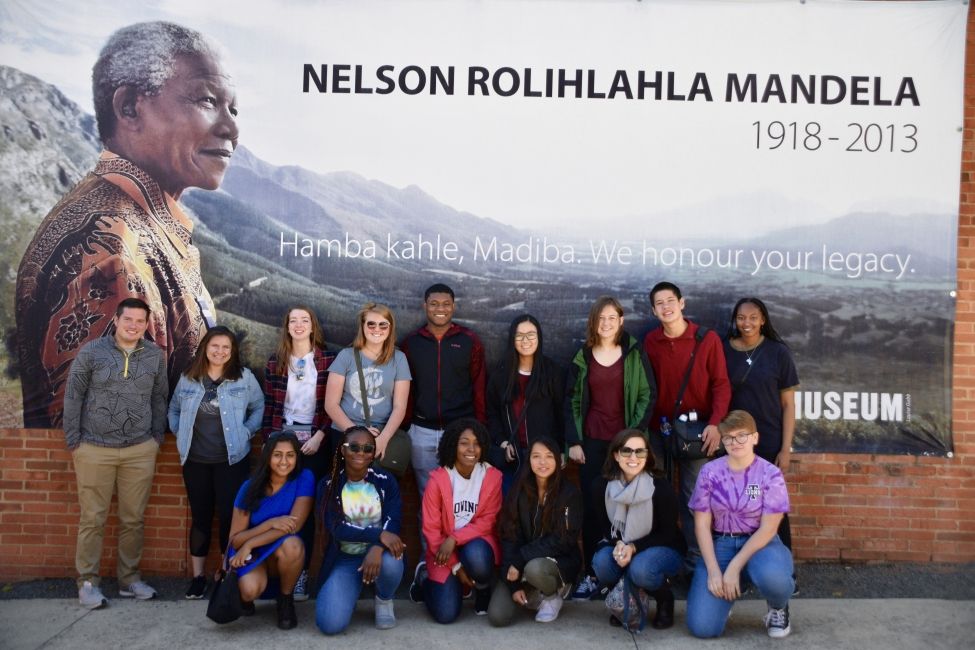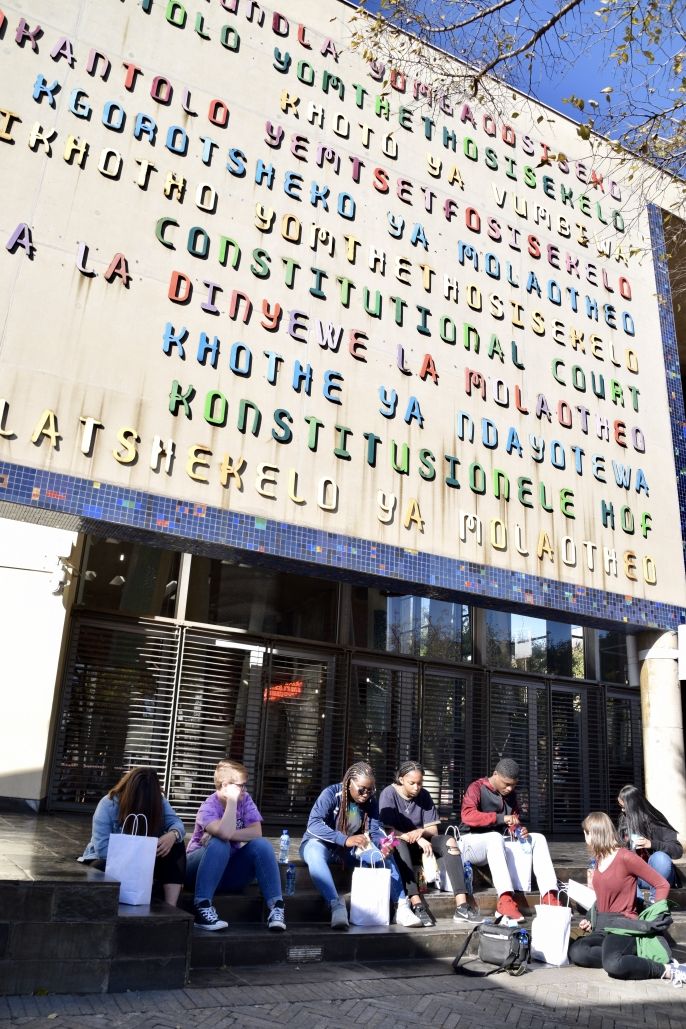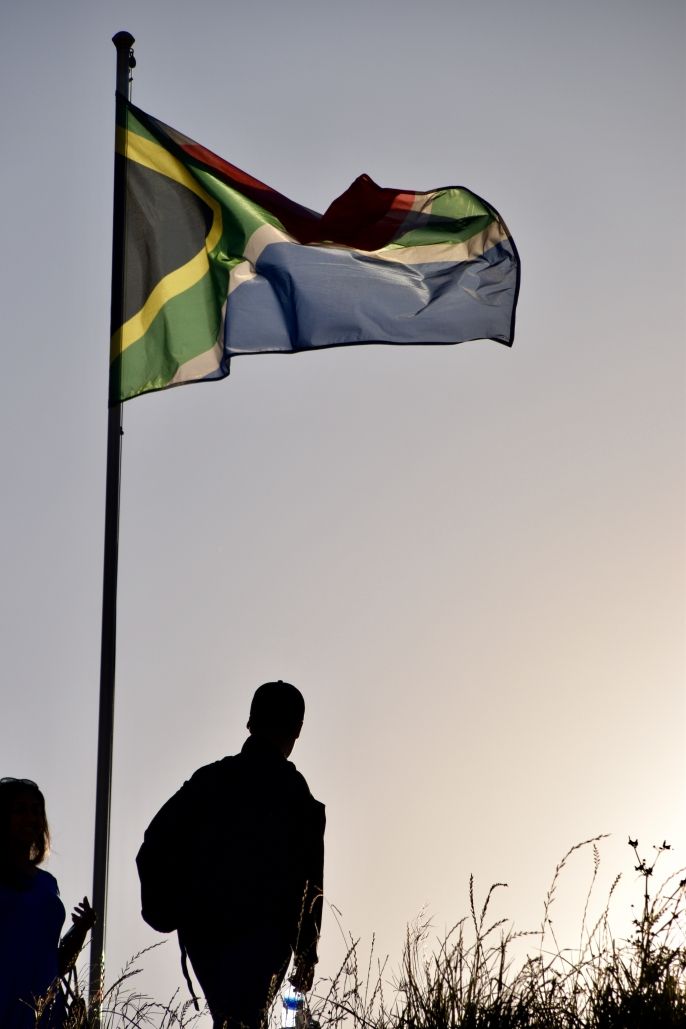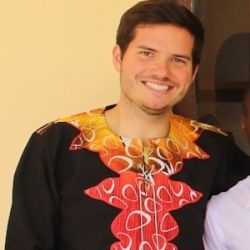Molweni! Greetings from South Africa!
After months of waiting, thoughtful packing, and patient travel, our 14 high school students have arrived safely in Cape Town and settled into their dorms at the CIEE Global Institute. Over the course of their weeks, students will take on the immense task of understanding the history, language, leaders, and culture of South Africa, and through thoughtful study, they will begin to challenge the idea of what makes a strong leader and how to use their own skills to improve their own communities. Wasting no time diving into difficult, complex topics, the students visited the Apartheid Museum in Johannesburg on Day 1 to provide context for what follows in their journy. One of our students, Grace, describes the experience in her own words:
"On our first full day in Johannesburg, our group visited The Apartheid Museum and Constitution Hill. Each of us began with different levels of knowledge on the topic of apartheid, but after our trip to the museum, we all had a better idea of the effects it had on the country. The museums exhibits did more than just present the information in an ordinary way; they gave you a realistic glimpse into the horrors of that time period, from the entrance where we were separated based on the race randomly assigned to us on our ticket to a police truck used during apartheid that we could sit inside of. In addition to learning about the injustice that existed at the time, we were exposed to many upstanding leaders who rose up against it. While many of us were aware of Nelson Mandela, we heard some new names like Winnie Mandela, Steve Biko, and many others. After the museum, we traveled to Constitution Hill. We were not expecting our visit to begin with a tour of a jail used during apartheid, but as Nelson Mandela once said: "No one truly knows a nation until one has been inside its jails", and this jail definitely reflected how people were treated in South Africa during that time. Next to the former prison is the new Constitutional Court, showing the great positive strides that have been made since apartheid ended in the nineties. The court building was filled with beautiful artwork and symbolism to remind visitors of the place South Africa has become in recent years. While it is amazing how much positive change there has been, the tour guide reminded us frequently that there is still a long way to go to repair the damage apartheid has caused.
When we debriefed after our visits, a big topic we discussed was discomfort. When addressing a massively negative part of history like apartheid, feelings like this are inevitable no matter what your background is. Many of us felt very overwhelmed after seeing the museum and prison. Others found connections to other aspects of history that hit them close to home. We came to the conclusion that while it is not always pleasant to feel uncomfortable, it is necessary to push boundaries and open up a conversation to prevent more of these issues from appearing in the future. Overall, our first day was a very important because it gave us some vital historical background and showed us the many hopeful changes that have been made since."
Related Posts
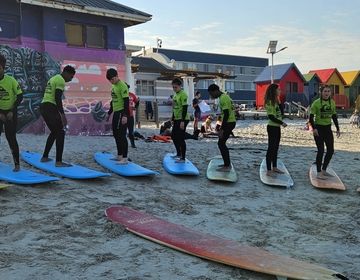
Hang 10!
This past weekend students explored local markets, travelled to Boulders Beach to see the penguins and saw the western-most cape which Cape Town was named after! Students also learned how... keep reading
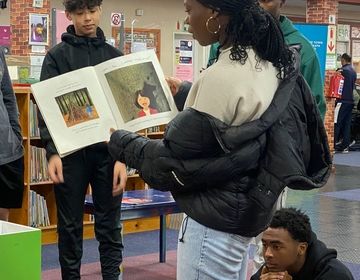
First Impressions of Service-Learning PT 2
Once students settled into their service-learning site and had more time with the students, they were able to read a group of younger students' stories and get them interested in... keep reading
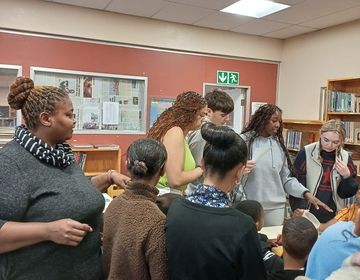
First Impressions of Service Learning
This week, after learning about the history and cultural context of their service-learning site, students began their service! Students were educated on literacy in the area and were told that... keep reading
